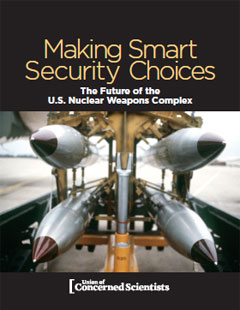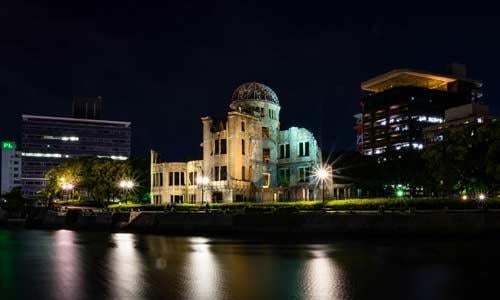The United States seeks to maintain a reliable, safe, and secure nuclear arsenal. Key to this enterprise are the laboratories and facilities that research, design, produce, and maintain nuclear weapons—collectively known as the nuclear weapons complex.
This report examines the essential missions of the complex, considers its key challenges, and suggests critical near- and long-term steps, detailed below.
Refurbishing (not replacing) nuclear weapons
The United States plans to replace the seven types of weapons currently in the U.S. nuclear arsenal with five different weapons over the next 25 to 30 years. It also plans to build several new facilities to produce parts for these weapons, some of which are unnecessary or over-sized.
UCS recommends giving strong preference to refurbishing existing weapons, and canceling or rightsizing new production facilities.
Learn more about extending the life of the nuclear arsenal.
Prioritizing surveillance of nuclear weapons
The United States relies on its Stockpile Surveillance Program to assess the reliability, safety, and security of its nuclear arsenal.
The agency that oversees the complex—the National Nuclear Security Administration (NNSA)—has not, however, given this program the attention it deserves, and should prioritize surveillance regardless of budget cuts.
Learn more about nuclear weapon surveillance.
Nuclear weapons and stockpile stewardship
The Stockpile Stewardship Program was created to better understand how nuclear weapons work, including research into new designs and modifications. It uses experimental and computational facilities to model the behavior of nuclear weapons.
Refurbishing existing weapons—rather than building newly-designed ones—will reduce demands on these facilities.
UCS recommends that the independent scientific JASON group assess the utility of the Stockpile Stewardship facilities for different types of life extension programs.
Learn more about stockpile stewardship.
Retaining a qualified nuclear weapons workforce
A skilled scientific and technical workforce is essential to the NNSA’s ability to maintain the U.S. nuclear stockpile: the weapons complex continues to compete with other employers for such skills.
UCS recommends continuing to offer competitive salaries and benefits, as well as programs and opportunities that support high-quality research on topics other than nuclear weapons.
Learn more the nuclear weapons complex workforce.
Minimizing risks of storing plutonium and highly enriched uranium
A key mission of the nuclear complex is to safely and securely store and dispose of surplus plutonium and highly enriched uranium (HEU), which can be used to make nuclear weapons.
While the NNSA plans to reduce its plutonium and HEU stockpiles, more can and should be done, including further reductions of these materials, consolidation at fewer locations, and more secure disposal of plutonium, instead of using it to fuel nuclear power plants.
Learn more about the risks of storing plutonium and highly enriched uranium.
Ramping up research on nuclear dismantlement
While the U.S. nuclear arsenal has shrunk over the last few decades, so has research on verifying nuclear arms reductions.
In line with the U.S. commitment to a world free of nuclear weapons, the weapons complex needs to ramp up research on how to verify further reductions in nuclear arsenals.
Learn more about nuclear dismantlement and verification.




